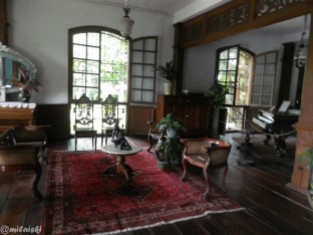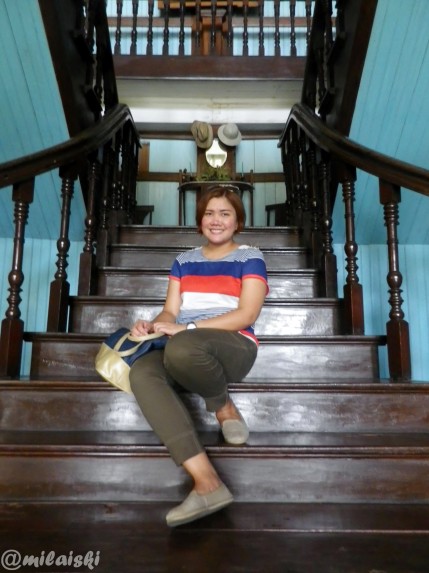I usually try to schedule an out of town trip during summer. In the Philippines, school break falls on the months of April to May so I have come to associate summer = vacation. Now that I am working, I maintain that association by going on vacation trips during summer.
In the summer of 2014, I went to the provinces of Negros Occidental, Guimaras and Iloilo in the Visayas area of the Philippines with my high school friends, Cez, Thomas and Galembs. Our trip lasted for four days. Our entry point was Silay City in Negros Occidental, then our exit point was Iloilo.
The next travel series I will share are what I have to come to call as “BIG trip”. It stands for Bacolod-Iloilo-Guimaras.
1st stop: Silay City
Bacolod is the capital of the province of Negros Occidental but its airport is located in the province of Silay, which is about a 30-45 minute ride from Bacolod City. Silay City is one of the two museum cities in the Philippines, the other one being Vigan City in Ilocos Sur. It has been referred to as such due to the number of preserved Spanish houses in the city. In the airport, we were even given a map which detailed where all the Spanish houses were situated.
From the airport, we decided to proceed first to El Ideal Bakery, of the most must try’s in Silay, to eat breakfast. The restaurant-bakery is is also housed inside an old Spanish residence!
We ordered the sun dried tapa, claimed to be the specialty of the restaurant. We paid almost Php 300 bucks for this and we honestly could’t convince ourselves that there was something special about the tapa!
After resting a bit, we started our walking tour of Silay City. There are a number of old Spanish houses but most of them are still occupied so mostly are off limits to the public. Only those houses that have been converted to be museums allow guest.
One of the houses that has been converted to a museum is the house of the late Victor Fernandez Gaston. Today, it is better known as Balay Negrense.
From what I gathered from the tour guides, the house was built in the 1890’s. Some aspects of the house, however, had to be repaired and restored because it suffered major damages in the the 1970’s.
By Filipino standards, Balay Negrense is huge. This means that the family it once belonged to was well off. No wonder there because Negros Occidental used to be and is still home to some of the richest families in the Philippines.
Our next stop was the Hofilena Heritage House. It has also been converted to a museum but unlike Balay Negrense, the owner still lives in the house! In fact, we were even lucky to chance upon its owner Mr. Ramon Hofilena.
We learned from Mr. Ramon’s staff that he used to be a celebrity. He is also related to Carla Abellana, one of GMA’s leading actresses. The second floor of the house housed Mr. Ramon’s painting collections, including various paintings of himself done by several illustrators and painters. Sadly, the room where the paintings were located was off limits to cameras.
From the Hofilena House, we proceeded the San Diego Cathedral. Most of the locals we talked to told us to check out the church because its dome is claimed to be designed after the the St. Peter’s Basilica in the Vatican.
I could not agree because I haven’t seen the St. Peter’s Basicila in person but the conclusion I arrived to was San Pedro Cathedral was massive and impressive.
It was almost lunch time when we left the church so we had to walk under the scorching sun to reach our last stop in Silay, the Bernardino-Jalandoni Museum. Compared to the other ancestral houses we’ve visited, this one was less preserved. However, based from the size of the house alone, one can easily conclude that a well-off family once lived there as well. Seems like Silay used to be home of very rich people.
From the Bernardino-Jalandoni museum, we flagged a bus en route to Bacolod City proper. The ride was short but definitely eventful. Imagine chickens, bags, elbows all in one place…near your face! Haha! No wonder travel is always about adventure. 🙂
See you in my next stop…Bacolod City!






















I like seeing you on the steps
Thank you! Staircases are one of the aspects old Spanish houses that I love! 🙂